As you will have already noticed, we've been placing an increased focus on the subject of UK road safety over the past few days, in order to help spread the message about Road Safety Week. In Northampton, a primary school has also been getting involved in this week's activities, by breaking the world record for the number of high visibility vests worn in one place. More than 1,500 people, including the pupils at the school, crammed onto the school yard in order to smash the previous record of 1,475 people, setting the bar for the next group of people looking to take on the challenge.
While the main aim of the day was to aid the promotion of Road Safety Week, it was also an opportunity for staff, pupils and local residents to pay tribute to one of their former pupils. 13 year old Sophie Bywaters was tragically killed whilst crossing the road upon returning from a youth club back in 2009, an accident made even more heartbreaking by it's preventable nature. Members of the local police as well as the fire and rescue service were also in attendance at the event, not only to aid in the record attempt, but also to give various presentations on road safety. A number of informative activities took place later that day, including a road safety signage competition for students, with the winning designs being chosen for use on international infrastructure group Balfour Beatty's sites. There were also live demonstrations with safety vehicles and fire safety appliances, in order to aid the illustration of vehicle blind spots and proper safety procedure.
It's extremely inspirational to see how this school has managed to encourage interest in the topic of health and safety, by presenting the information in a fun and engaging fashion. It is vitally important that we inform the most vulnerable members in our society about these issues, and ensure that they are fully aware of the safety procedures that should be followed at school, at home and on the roads. This comes from providing good quality and easy-to-read information, in the form of engaging activities such as this one, and of course in the form of good quality safety signs.
To find out more about Road Safety Week, visit the Brake website.
To browse our range of high quality health and safety signs, click here.
Label Source supply an extensive range of labels for use in recording maintenance of equipment, plant and machinery, which are relevant for whichever type of maintenance system adopted. The ranges include our maintenance labels, maintenance tags, aluminium foil labels, write and seal labels, and equipment status labels and tags. Also, many others are produced to customer specification to include company information and inspection criteria.
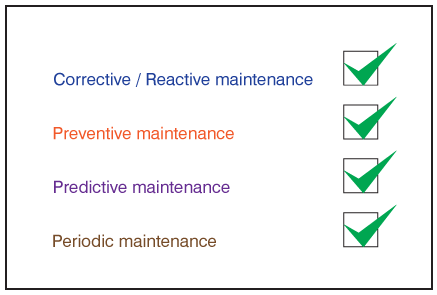
So as part of your maintenance regime use these label and tag products to assist in safe maintenance practices for your workers and the environment, to provide lower process downtime through equipment failures, more efficient use of resources, and enhanced product quality.
Today we are continuing with the road safety theme (it is Road Safety Week, after all!) and asking you how well you know your road signs.
Be honest now, after passing your driving test, how many of you can remember what all the road signs actually mean? Well, according to a survey commissioned by Zuto, a car finance expert, a staggering 90 per cent of drivers in the UK admitted that they find road signs confusing. Some of the results of this survey are truly shocking:
- One third of the participants did not recognise the national speed limit
- Half of the participants believe that there are too many signs on the road
- One in 20 admitted that they have made mistakes driving due to confusing road signs
- Over 4 million drivers didn’t understand the “level crossing without a barrier” sign
- One in four drivers didn’t understand the “car and motorcycles prohibited” sign, with 13 per cent believing that it meant the exact opposite.
Here at Label Source, we take health and safety very seriously, and not knowing your road signs can lead to accidents and hazardous driving. As it is Road Safety Week, we thought it would be fun to test your knowledge of some UK road signs. See if you can correctly identify these road signs:
1. What does this sign mean?
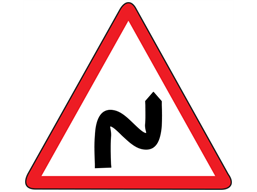
a) Slippery road
b) Double bend first to the right
c) No right turn
d) Junction on bend ahead
2. What does this sign mean?
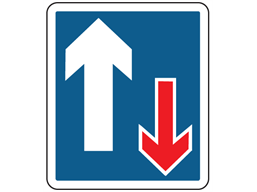
a) Traffic has priority over oncoming vehicles
b) Oncoming vehicles has priority
c) Way out
d) Ahead Only
3. What does this sign mean?
a)
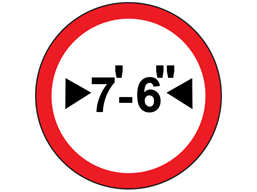
a) Maximum height
b) Maximum length
c) Maximum width
d) Height width allowed sign
4. What does this sign mean?
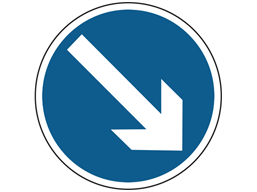
a) Keep left
b) Keep right
c) Turn right
d) Right turn ahead
5. What does this sign mean?
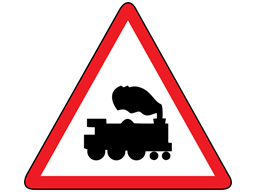
a) Train station ahead
b) Steam Train museum ahead
c) Level crossing
d) Level crossing without barrier ahead
Answers
1. B
2. A
3. C
4. B
5. D
Label Source would like to remind you that the use of the correct road signs is crucial for safety of the road user and pedestrians. To view our full range of road signs, please click here.
Today marks the beginning of Road Safety Week, a flagship event created by road safety charity Break, which runs from the 23-29 of November. This year's theme is 'Drive less, live more', the aim of which is to help prevent injuries and fatalities on the road, while also causing people to think about their overall car use.
To give you a better understanding of why this event is so important for health and safety in the UK, here are some facts which were released by break today:
- Five deaths, and 64 serious injuries happen daily on UK roads
- Air pollution is estimated to kill 52,000 people in the UK each year
- In a survey of a 1,000 driving adults, 85% believed we should reduce overall car use
- Road casualties in the UK went up by 4% last year.
- One in three non-cyclists said they would be more willing to cycle their commute if routes were safer
It's clear that driving has a serious impact on the heath and well-being of the UK as a whole, due in part to driving-related pollution and immobility,as well as fatalities and injuries caused by human error. In order to help promote Road Safety Week, Label Source would like to advise all of our customers to use and display the correct road safety signs at all times! Our full range of signs and barriers can be found here.
Remember, accurate and clear road safety signs can reduce the chances of an accident, by warning divers of hazards and speed restrictions!
To see the full list of statistics published by Brake, click here, or take a look at their interactive resource.
We would also encourage you to share this post on Twitter and Facebook, using the hatshtags #RoadSafetyWeek and #drivelesslivemore
For sites with high levels of hazardous substances and dangerous chemicals, the new Control of Major Accident Hazards (COMAH) Regulations came into force on 1st June 2015. This is the introduction of the European Directive known as Seveso 111 in the UK. The main change involves the move from the CHIP (Chemicals – Hazard Information and Packaging to Supply) classification to the new CLP (Classification Labelling and Packaging) standards, which introduces the GHS (Globally Harmonised System).
The reclassification involves converting the substance inventories from the old to the new classification, as well as involving new additions such as pyrophoric solids and liquids, and flammable aerosols. These cover petrochemical, pharmaceutical, agrochemical, nuclear and explosives for on-shore sites.
In addition, all COMAH sites must make certain information about their sites and hazards in an electronic format for public access. This should include prevention policies, emergency plans, and methods of warning the public in the event of a major incident.
Label Source supplies a comprehensive range of GHS signs and GHS tapes, as well as hazard warning signs for chemicals and dangerous substances, which can assist in your risk assessment and training requirements. These signs can form an important component in the prevention of major accidents, and in limiting the effects if any such incident occurs.